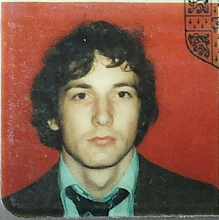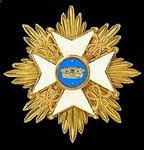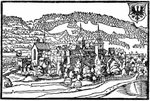First raised 1740. Chef was Colonel Gustav Bogislav von Münchow, later Lieutenant General, from 1740-1766.
IR36 was with the King's Army at Lobositz on October 1st 1756, and was heavily involved in the fighting against the Croats on the Lobosch Hill. In 1757 it was at first with Schwerin's army, then with Keith as part of the encirclement of Prague from the west. At Kolin on the 18th June the regiment was with von Hülsen's advance guard leading the first attack on the Krzeczhorz Heights, which it took as well as the village and held to the bitter end, losing 23 officers and 908 men. By the evening there were only around 6-700 men left. From mid-August it joined Bevern's Corps and fought at Breslau on the left wing under Zieten; the regiment fought well despite being barely one battalion strong. Joining the King's army with the survivors of Breslau on the 2nd December, the grenadiers and the battalion-strong regiment fought at Leuthen on the right wing of the second line. The commander and the two captains of IR36 in the grenadier battalion 35/36 received the Pour-le-merite for their capture of four cannon at Breslau and of a battery at Leuthen, having lost 167 men at the latter battle. (Christopher Duffy in Army of Frederick the Great 1st Edition (henceforth AFG1) shows about 50% casualties.) The remains of the regiment went to join in the siege of Breslau.
From the end of March to the middle of April 1758 IR36 was with the King's Army successfully besieging Schweidnitz then advanced to Olmütz and the capture of the city of Littau. Under Margrave Karl it was involved in the occupation of Silesia. In 1759 the grenadiers fought at Kunersdorf (AFG1 shows about 50% casualties) and the regiment was at the camp of Schmottseiffen under the King then Prince Heinrich.
In the autumn of 1759 it was with Finck's Corps, which was surrounded and forced to surrender at Maxen on November 21st; in total 13,000 men of that Corps were captured, a huge loss to the Prussian army. Recruitment was difficult so the remaining battalion became part of the garrison of Schweidnitz, which was captured in 1761; IR36 and three other battalions laid down their arms. IR36 was not raised again until 1763 when its ranks were filled with Saxons from what had been the regiment of Prince Lubomirski, later Röbel.
Christopher Duffy says (AFG1) that IR36 had "an unenviable record" and that Frederick "held the... "Maxen" regiments in everlasting contempt", even though the responsibility for the isolation and loss of Finck's Corps ultimately rested with Frederick.
And this was the uniform in 1756:
This is another rather plain set of Prussian flags; the next two, IRs 25 and 27, are more complex and cheery. Then the last flags that need doing for the Leuthen list are those of IR15, the unique flags of Frederick's Guards. (They will also complete the Rossbach list.) Immediately after IR36's flags I plan to post those of the Reichsarmee regiment Baden-Baden, in tribute to their heroic fight at Freiberg in 1762 along with several other Reichsarmee units, whose flags I may also produce. Once I have completed the Prussian infantry flags line up for Leuthen I may go on to do those of the battle of Prague; many of the flags that remain to do for that battle are, as luck would have it, fairly complex and colourful.




















Another fine pair of flags, David! I just finished off two French regiments of Picardie and Normandie. Now, I need to print your flags before I call them finished.
ReplyDeleteThanks, Jon. :-) The flags of the next two, IRs 25 and 27, are rather "prettier", especially 27! Its flags are some of the most complex, with 3 different colours on the Kompaniefahnen.
ReplyDeleteI look forward to seeing your Normandie and Piacrdie regiments with flags flying. :-)
All the best,
David.
They may be plain but I'm rather taken with them, to be honest David. Looking forward to something more 'pretty' as and when time allows:)
ReplyDeleteThank you for another set of wonderful flags, I will be doing this regiment in the near future.
ReplyDeleteWillz Harley.
Always a pleasure to see your work, David! Looking eagerly forward to those forthcoming (?) Reichsarmee flags.
ReplyDeleteBest Regards,
Stokes
Thanks, Steve. I'm glad you like them. :-) The flags of IRs 25 and 27 are all done, with just the text to write. I have the text for Baden-Baden to write first!
ReplyDeleteAll the best,
David.
Thanks, Willz. Look forward to seeing them in action with your troops sometime soon. :-)
ReplyDeleteAll the best,
David.
Thanks, Stokes, good of you to say so. :-) (I just posted a comment on one of your latest blog posts which I hope got through to you for moderation.) The flags of Baden-Baden are completed with just the text to write; I say "just" but there's quite a bit of work to do chasing up the information first... As I've said umpteen times, that's what really takes the time!
ReplyDeleteAll the best,
David.
A simple flag, but a very pretty one. I very much like the blue you used. I would love to find a paint that color. It’s almost periwinkle, isn’t it?
ReplyDeleteThose white mitres would be a beacon on the gaming table, wouldn’t they? Very striking.
Thank you once again for sharing your remarkable talents with us, David.
Bill
Thanks, Bill. Yes, I think it's growing on me too, despite the simplicity; the colour is a rather attractive blue but quite hard to pin down exactly. And yes indeed, those white mitre caps would stand out on the games table. The last two of the line infantry flags, those of IRs 25 and 27, are respectively green with yellow corner darts and a dark blue with the flamed cross pattern, vertical in yellow and horizontal in red; it's one of the most complex of the Prussian flag designs and rather striking. Doing the flags of the last unit, IR15, from scratch will be a fairly big job as most of the design is unique to that regiment. But first we'll have the flags of Baden-Baden, the Reichsarmee regiment - the Reichsarmee are my favourite underdogs of the SYW!
ReplyDeleteAll the best,
David.